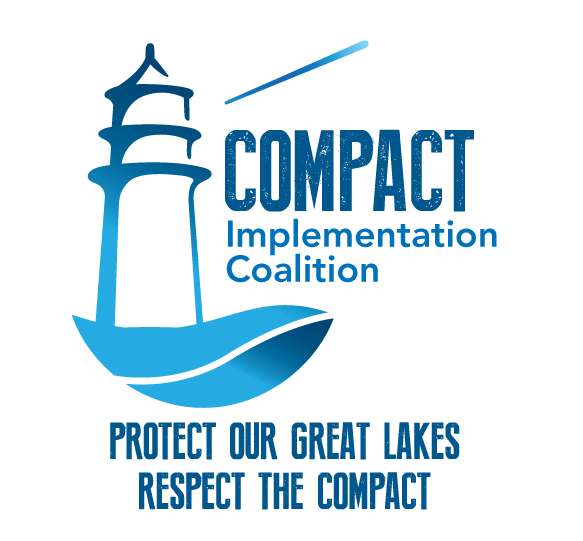LATEST NEWS:
The Waukesha diversion project is moving forward after receiving approval from the Great Lakes Governors and Premiers in 2016. The Department of Natural Resources held a public informational meeting at Carroll College in Waukesha on August 20th on Waukesha’s wetlands and waterways permit and Preliminary Final Environmental Impact Statement (EIS). Members of the Compact Implementation Coalition, gave oral comments at the hearing. Primary concerns centered on the lack of meaningful public input on the diversion given so many changes that have occurred since the last Draft EIS was issued 3.5 years ago. DNR was asked to write a new draft EIS that includes a comparison of all of the alternatives considered to date and which provides the public an opportunity to make informed comments on Waukesha’s alternatives for drinking water and return flow as detailed in the EIS. Many people, who will be impacted by new proposed pipeline routes, were not involved in the EIS process that occurred 3.5 years ago. We expect the draft water discharge permit, which will govern the return flow that Waukesha is proposing to send back to Lake Michigan via the Root River, will be released for comment in the next few weeks.
Read the Coalition's full comments on Waukesha’s Preliminary Final Environmental Impact Statement (EIS).
SUMMARY
Waukesha’s diversion of water from Lake Michigan to the City of Waukesha and adjoining areas was the first test of the Great Lakes Compact’s ban on diversions of Great Lake water. The Compact included 2 exceptions to this ban-- for a community straddling the Great Lakes watershed divide and for a community in a county straddling the divide—and Waukesha met this latter exception. Despite a flawed application and widespread opposition to this diversion, with over 39,000 people from all around the Basin raising concerns, the Regional Body approved an exception to the ban on diversions for Waukesha, with limited conditions. Waukesha is now in the process of implementing their diversion plan, which includes construction of drinking water pipelines from Milwaukee and sanitary pipes to return treated wastewater back to Lake Michigan via the Root River.
The Compact Implementation Coalition (CIC) opposed this diversion because it did not meet the spirit or letter of the law, and created a bad precedent for other communities around the Basin seeking to take water from the Great Lakes. Any weakening of the Great Lakes Compact threatens the precious water that the Compact was enacted to protect. The CIC continues to watchdog the state permitting process and will be holding Waukesha accountable for meeting the conditions in the diversion approval as well as all state and federal regulations.
REASONABLE WATER SUPPLY ALTERNATIVE
One of the biggest issues with Waukesha’s diversion approval was that Waukesha has a viable and sustainable alternative water supply for current AND future needs and therefore does not meet the Great Lakes Compact's requirement that states that any entity seeking an exception to the ban on diversions demonstrate that they have no reasonable water supply alternative. Waukesha has a local water supply alternative that is almost half of the cost of diverting water from the Great Lakes, allows for growth and development within its city limits, satisfies expected water demand from a growing population, and is safe from contaminants with treatment for radium and other contaminants.
WATER CONSERVATION
The Great Lakes Compact states that no part of the total amount of water requested in an application for Great Lakes water can be included in the application if it can be avoided through conservation measures. The City of Waukesha has not clearly shown that it has done all it can to avoid requesting water from the Great Lakes.
DNR PERMITTING
We will provide updates about the DNR permitting process and opportunities for public comment as the process moves forward. We expect that there will be hearings on an updated Environmental Impact Statement in fall 2018, which will include updated information on a new water supplier (Milwaukee) since the Compact application was submitted to the Regional Body, as well as more exact information on the return flow route and associated environmental impacts. Updated information can be found at the DNR water permitting website.
